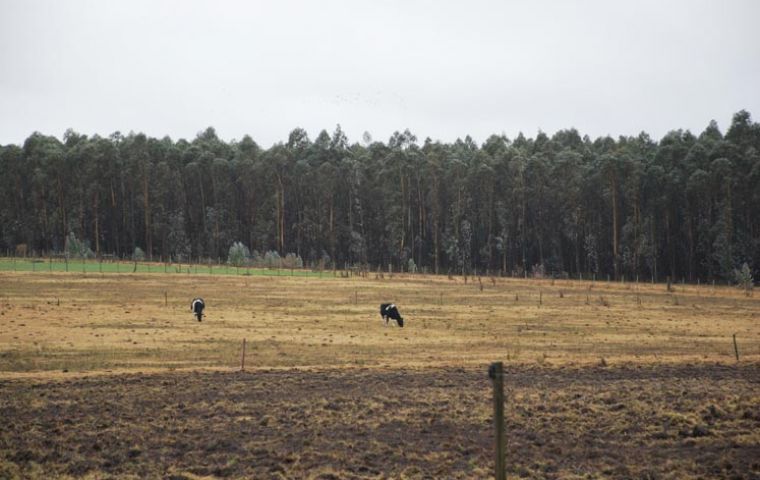MercoPress. South Atlantic News Agency
Uruguay has a million hectares of planted forests, according to FAO survey
 Some forest “islands” are used as shelter for cattle and sheep
Some forest “islands” are used as shelter for cattle and sheep Uruguay has 1.7 million hectares of forests of which almost a million hectares have been planted to feed the growing pulp industry while the rest are so called native forests, according to primary data from an inventory compiled by the Ministry of Agriculture with support from United Nations.
The National Forestry Inventory, INF, took two years to compile involving 21 people demanding 329.000 US dollars funded by FAO.
The results show that planted forests total 959.500 hectares, equivalent to 56% of the whole covered area which was surveyed as 1.721.658 hectares. The remaining 44%, 662.747 hectares are native woods.
Regarding planted forests, even when most (47%) are for the pulp and wood industries, there are also significant percentages related to agriculture (28%) and livestock breeding (18%).
Forests are linked to cattle, flocks and horses bred in open grasslands, since they offer shelter against the wind, cold and the sun.
Regarding water courses associated to the forests, the INF shows that most of them are defined as rivers, as opposed to streams, with virtually no recorded contamination.
“The quality of water is good in the majority of water courses linked to forestry”.
As to the type of soils the report indicates most of them have a slight angle, with a degree of light to moderate erosion. INF describes the selection of soils for planting forests as “good” since they have a good draining system, “essential for the species of trees planted in Uruguay”.
As to environmental problems in the planted forests, regarding water and air quality, invasive species and residual pesticides, they are overall of “low incidence”.




Top Comments
Disclaimer & comment rules-

Read all commentsGreat, the plantations will keep pressure off the native timber resources.
Aug 27th, 2010 - 09:10 am 0Commenting for this story is now closed.
If you have a Facebook account, become a fan and comment on our Facebook Page!